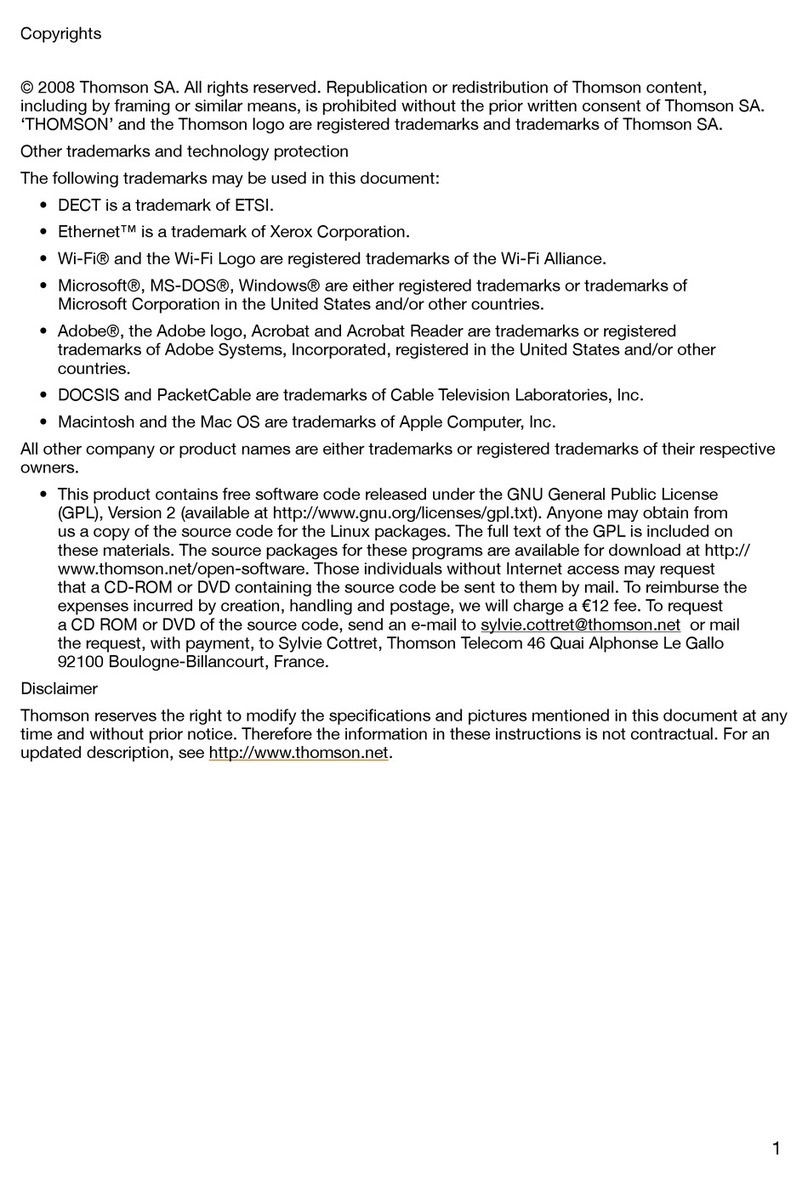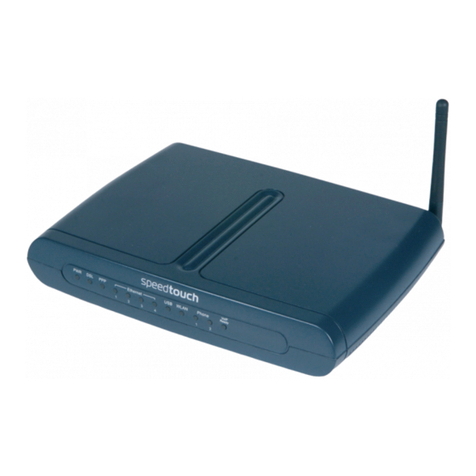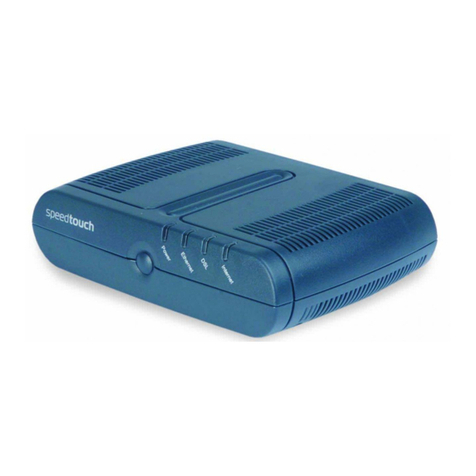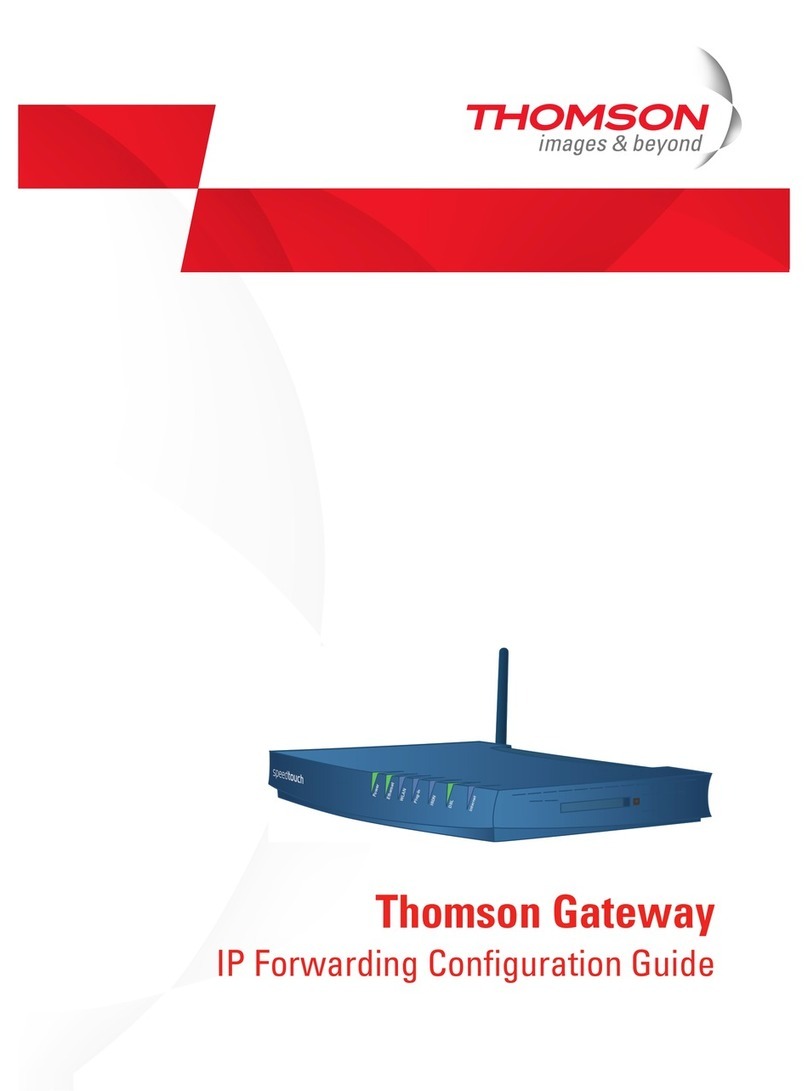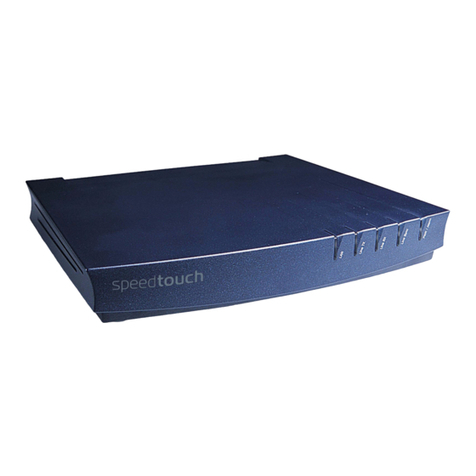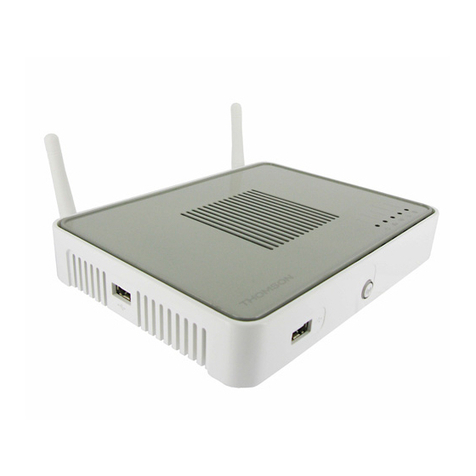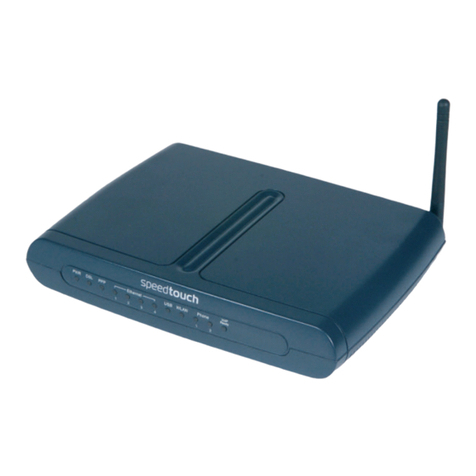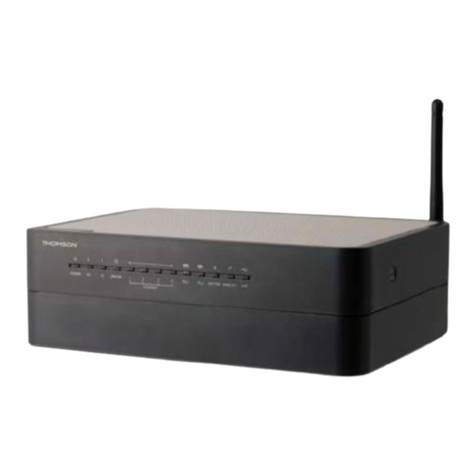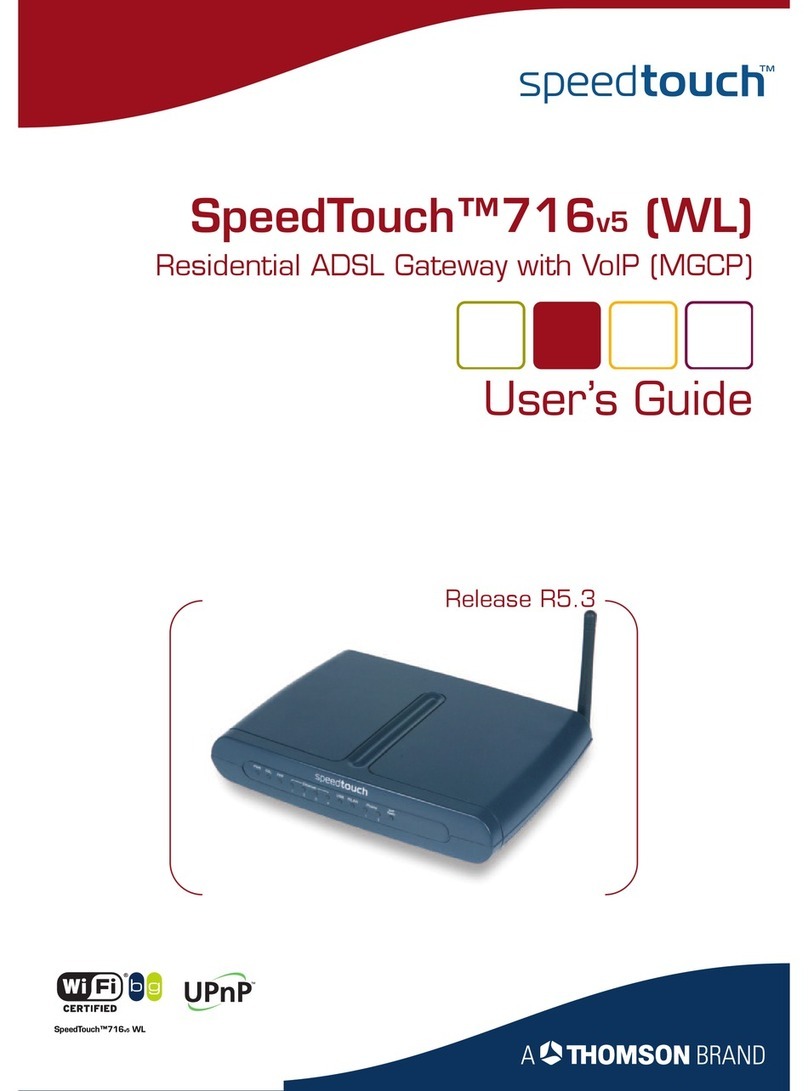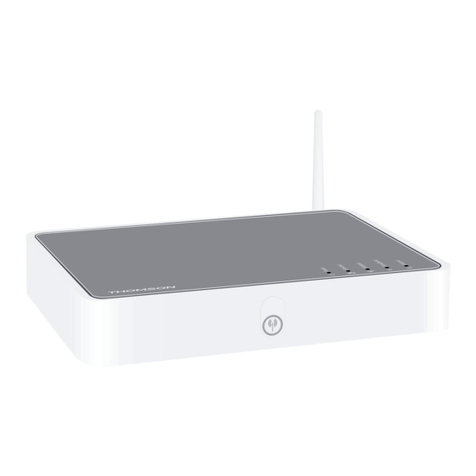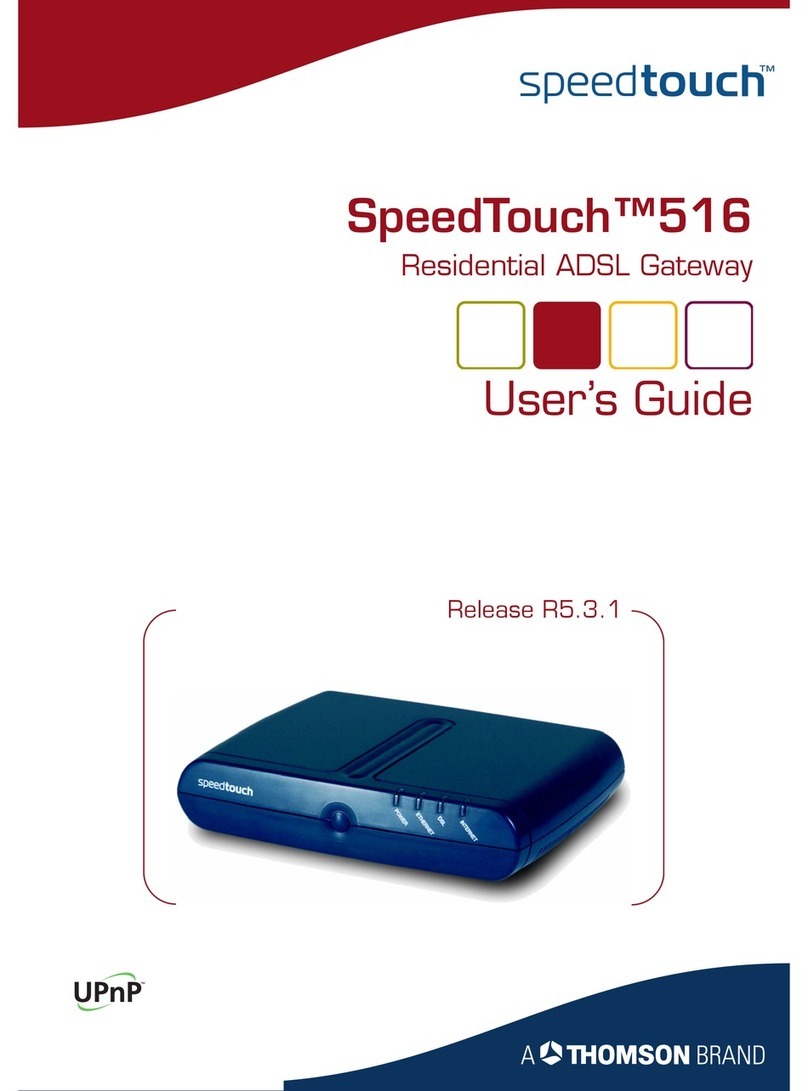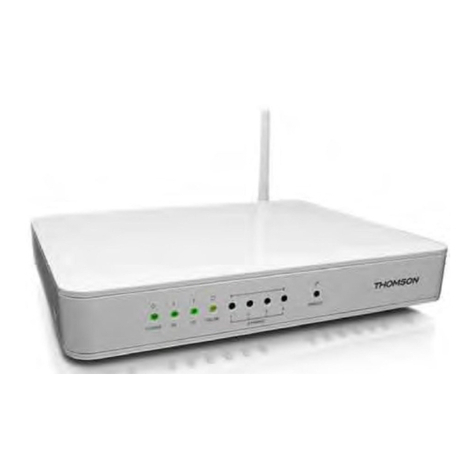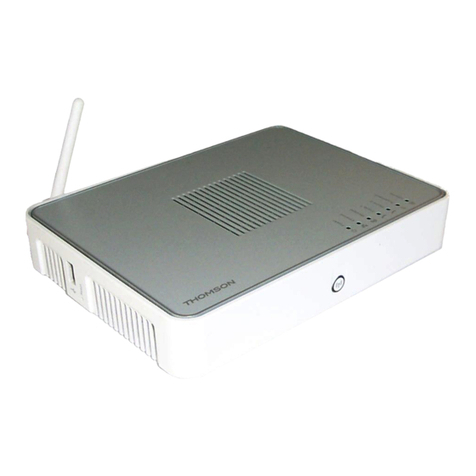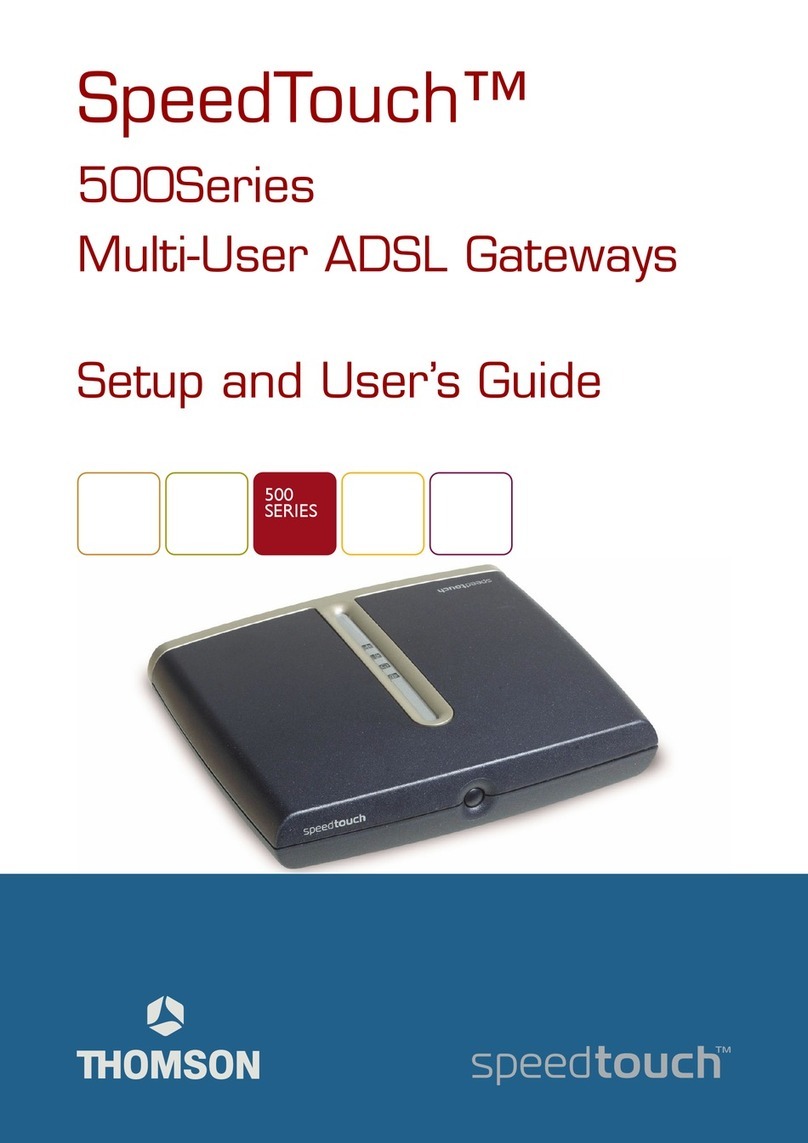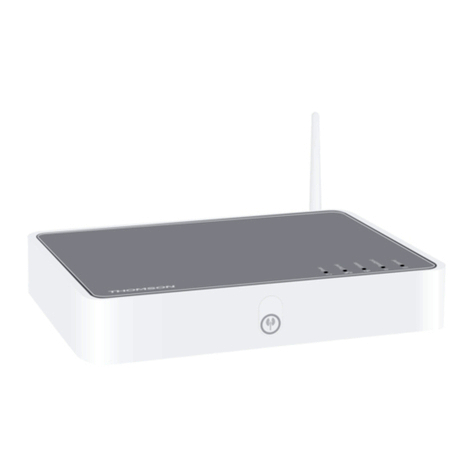E-DOC-CTC-20080313-0001 v2.0
4
1| Introduction
Terminology
This paragraph briefly describes several DSL-related terms that are used throughout this Configuration
Guide:
DSL line: this term refers to a copper wire-pair that can be connected to a DSL modem.
DSL link: this term refers to a DSL circuit in the SHDSL chip. Each DSL link is terminated on the back-
panel connector and can be connected to a single DSL line. A device with one DSL link is also referred to
as a single pair device. Similarly, a device with two DSL links is referred to as a 2-pair device, and so on.
DSL interface: Thomson SHDSL devices implement a logical DSL interface. Multiple DSL links can be
added to a single DSL interface. This way, the DSL interface can be used to refer to a single link or
multiple aggregated links.
DSL profile: this term refers to a set of configuration parameters that are applied to a single DSL interface.
It is assumed that the configuration parameters that are part of a DSL profile only change sporadically.
Internal channel: this term refers to an internal communication channel between the SHDSL chip and the
network processor (NWP). A DSL interface is associated with an internal channel, via which it exchanges
data traffic with the network processor. In practice, this internal channel is realized via a Utopia bus.
ATM M-pair operation: multiple SHDSL links are assigned to a single DSL interface and as such constitute
an ATM M-pair group. Data-traffic originating from the NWP will be byte interleaved over the members of
the M-pair group via the SHDSL bonding technique.
EFM M-pair operation: multiple SHDSL links are assigned to a single DSL interace and as such constitute
an EFM Physical medium entity Aggregation Function (PAF) group. Similar as with ATM M-pair, data-
traffic originating from the NWP will be segmented over the members of the PAF group via the EFM PAF
function. From a high level perspective, the intention of an ATM M-pair group or an EFM-PAF group is
achieving a higher bandwidth for a given loop length or obtaining a longer reach for a given bandwidth.
For this reason, the terms EFM-PAF, EFM M-pair and PAF group will be used interchangeably in the
remainder of this document.
Overview
The remainder of this SHDSL Configuration Guide is organized as follows:
Chapter 2 provides a short overview of the SHDSL standards. It briefly explains the operation of the ATM and
EFM TC-layers and gives tentative figures of SHDSL’s link capacity.
The next chapter describes Thomson’s SHDSL product portfolio and explains the LED behaviour on the front
panel and the connectors on the back panel.
Chapter 4 explains the configuration and operation of the Thomson SHDSL interface in detail, using the
Command-Line Interface (CLI). The description of a simple back-to-back setup helps the SHDSL beginner to
get started, while the more experienced reader can find specific information in an alphabetic list of SHDSL
CLI commands.
Finally, the last chapter pays special attention to Thomson’s SHDSL modem options. These options are
mainly intended to achieve interoperability in cases where the CO’s SHDSL implementation deviates from
standard.
This results in the following chapters:
Topic Page
“2 SHDSL Overview” 5
“3 Thomson SHDSL Devices” 13
“4 Configuring and Operating the SHDSL Interface” 19
“5 Modem Options” 35
